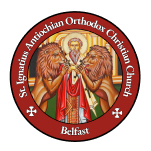Dear brothers and sisters,
This is weekly newsletter #25 of the St Ignatius Parish in Belfast.
Contents of this Newsletter:
- Message from Fr Dmitry: Wondrous is God in His saints
- News and Announcements: Kursk Icon in Belfast, Faith & Fellowship, and more
- Homily on last Sunday’s Gospel: Garment of Salvation
Message from Fr Dmitry: Wondrous is God in His saints
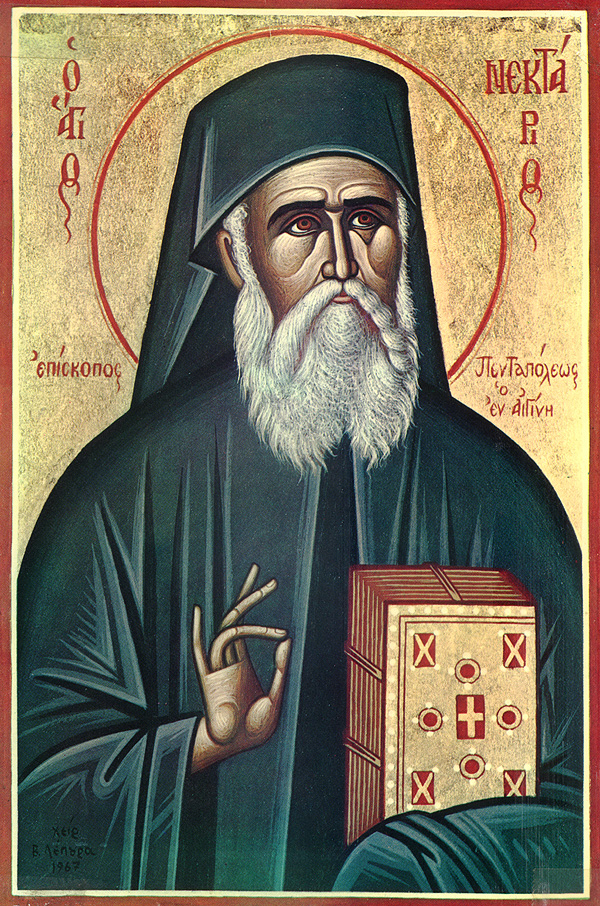
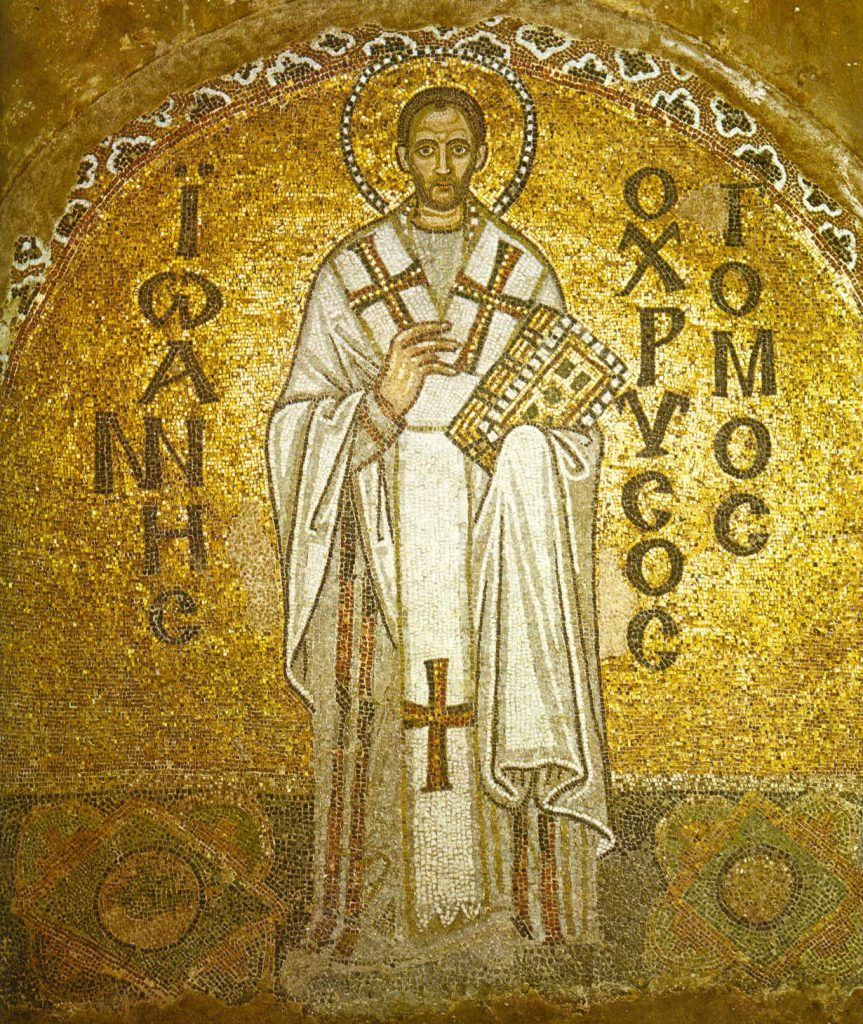
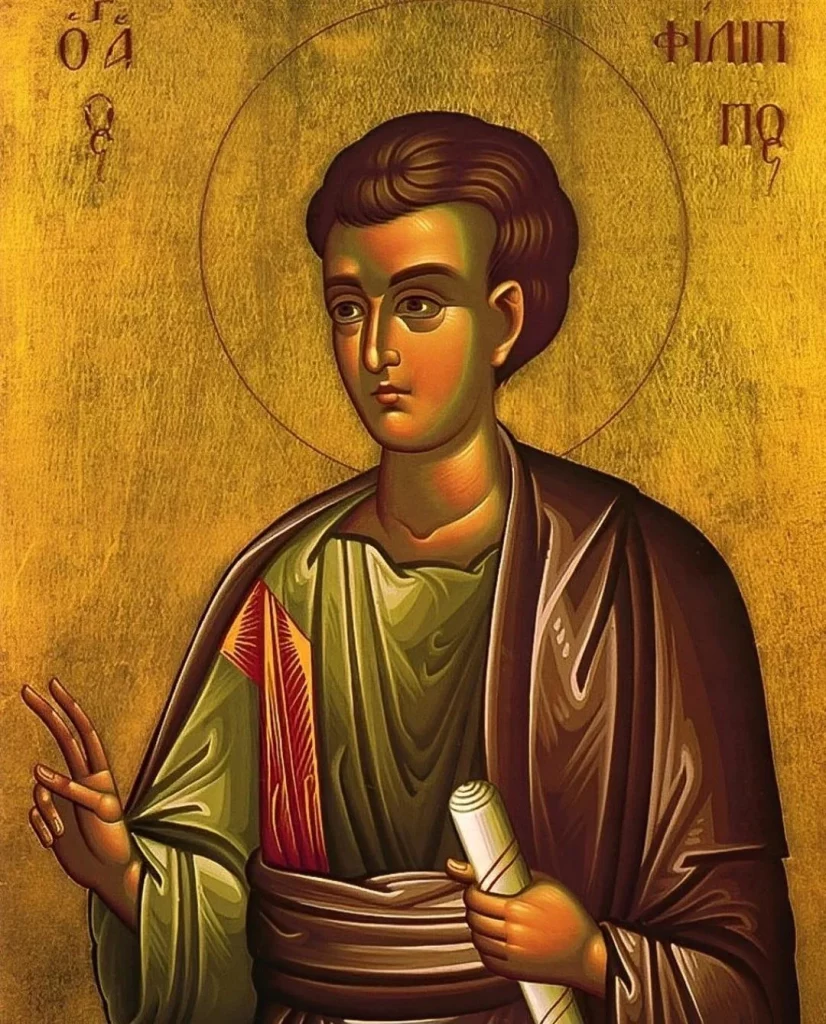

The seven days between past Sunday (9th November) and next Sunday (16th November) are particularly reach with feasts of major saints. On Sunday, 9th of November, we celebrated the feast of a modern day saint, Nektarios, Metropolitan of Pentapolis and Wonderworker of Aegina. Later this week, on the 13th of November, we will celebrate the memory of St John Chrysostom, Archbishop of Constantinople. On 15th of November, we will celebrate Holy Apostle Philip. Finally, on Sunday, 16th of November, we will honour Holy Apostle and Evangelist Matthew.
Looking at these four great saints, one finds many striking parallels and paradoxes. On one hand, they were all bishops, overseers of the Church’s life. The Apostles were the first bishops of the Church, while every other canonical bishop is their successor, linked to them through the unbroken chain of apostolic succession. It is this chain that makes possible the manifestation of the Orthodox Church as the Body of Christ:
“True knowledge is the doctrine of the apostles, and the ancient constitution of the Church throughout all the world, and the distinctive manifestation of the body of Christ according to the succession of the bishops, by which they have handed down that Church which exists in every place, and has come even unto us, being guarded and preserved, without any forging of Scriptures, by a very complete system of doctrine.”
— St Irenaeus of Lyon, Against the Heresies IV.33.8
All these men possessed great sacramental, spiritual as well as administrative authority in the Church, and each was also a teacher of the faith. Matthew is the author of one of the four Gospels. Philip, so illumined by the Holy Spirit, interpreted the Scriptures to the Ethiopian eunuch while riding in a chariot with such clarity that the man asked immediately to be baptised (Acts 8:26–39). St John Chrysostom, whose honorific “nickname” means “Golden Mouth”, remains one of the greatest preachers the Church has ever known (just check his Paschal Homily, which we read every year at the Paschal Service). St Nektarios, a true teacher of the Church, taught for many years at the Rizarios Ecclesiastical School in Athens, and left many theological and patristic writings, guiding generations of faithful in holiness, humility, and love in Christ.
Yet despite their faithfulness and their high office, all of them suffered persecution. The Apostles gave their lives for the faith. In apostolic times, to be a leader of the Church was not to enjoy security, privilege, or power, but to be the first target of persecution. St John Chrysostom suffered greatly, though he could have lived in comfort and prestige. The supposed symphonia between the imperial and patriarchal thrones in the Roman Empire gave the Archbishop of Constantinople immense influence, access to wealth, and social honour. St John rejected all of this without hesitation. As a teacher, bishop, and spiritual father, he stood firmly for the truth, even when that meant conflict with the imperial family. He died in exile, faithful to the end. St Nektarios too endured years of unjust suffering and slander. He was removed from his episcopal see in Pentapolis without cause and lived the rest of his life in humility and poverty. For a bishop, being separated from his flock, deprived of the service that defines his very identity, is a deep suffering. Yet St Nektarios bore this with patience and love, dying in poverty and poor health in a hospital for the destitute in Athens.
The lives of these four saints, whose feasts we celebrate so closely together, remind us vividly of the final Beatitude:
“Blessed are those who are persecuted for righteousness’ sake, for theirs is the kingdom of heaven. Blessed are you when men revile you, and persecute you, and utter all kinds of evil against you falsely for My sake.” (Matthew 5:10–11)
Despite their earthly authority and status, they never clung to it. Instead, they chose the blessedness of the eternal Kingdom, standing for righteousness in their lives and inspiring countless Christians through their example.
May they be an encouragement to all of us, and may their prayers strengthen and guide us on our journey to Christ. Happy Feasts!
P.S. St Nektarios left us one of the most beautiful and famous non-liturgical hymns of the Church, Agni Parthene (Greek for O Virgin Pure), dedicated to the Most Holy Theotokos. This hymn, translated into many languages, is beloved and sung throughout the Orthodox world.
- Chant in Greek: https://www.youtube.com/watch?v=Gzfz_9IOvMo&list=PLauDh0NkahoOp-bB21W_vH9-nxbGKgboG&index=1
- Chant in English: https://www.youtube.com/watch?v=YhXReeCLQQs
- English Text: https://fatherjohn.blogspot.com/2007/09/complete-hymn-o-virgin-pure-by-st.html
- Music Sheet in English: https://www.stnicholasar.org/music/O%20Pure%20Virgin%20TM.pdf
- Chant in Slavonic: https://www.youtube.com/watch?v=F-udChzZl3E
- Chant Romanian and Arabic: https://www.youtube.com/watch?v=hZKlXJBQIWU
News and Announcements:
- 1. Visit of the Wonderworking Kursk Root Icon of the Most Holy Theotokos: Our brothers and sisters at St John of Shanghai Orthodox Christian Church, Belfast (ROCOR) warmly invite you to the visit of the wonderworking Kursk Root Icon of the Most Holy Theotokos:
- Wednesday, 26th November at 6:00 PM – Supplication service, veneration and chanting of the Akathist, followed by fellowship.
- Thursday, 27th November – Pilgrimage with the Icon around the renowned sites associated with St Patrick in Northern Ireland. All are welcome to join.
With the blessing of Bishop Irenei (ROCOR) and Metropolitan Silouan, I, God willing, will join you in attendance and will concelebrate the service on the 26th of November.
More details on the parish’s official Facebook page and also see a poster attached below.
- Weekly Online Faith & Fellowship Meetings on Wednesdays: Join us for our next regular weekly Zoom meeting on Wednesday, 12th of November, at 7:00 PM (UK time): https://ucl.zoom.us/j/97707660214 This week, we will pray Little Compline and discuss the Gospel reading for the next Sunday
- Report about Services in Church, 1st and 2nd November: You can check a short report about our latest church services on the weekend 1st and 2nd November with some photos here: https://saintignatiusbelfast.org/november-services-in-church It was a blessing to have the church full of faithful. Thank you everyone who joined!
- Join our WhatsApp Announcement Group – A reminder that our Parish WhatsApp Announcements Group is the simplest way to stay connected with parish life. Through the group chat, you will receive service reminders, parish updates, and important notices directly on your phone. If you haven’t joined yet, you can do so here: https://chat.whatsapp.com/FOR43rXflmPCm1VTj25yaD
- Parish Library is now open – I remind you that that our parish library is now open! The library offers a growing collection of Orthodox books on various subjects for both adults and children, which you are welcome to borrow and read. You can browse the catalogue online, check the borrowing terms, and even place an order for a book at: saintignatiusbelfast.org/library. Our librarians, Michael and Porphyrius, will be glad to assist you and can be contacted at library@saintignatiusbelfast.org.

Last Sunday’s Gospel Reading and Homily: Garment of Salvation
The reading from the Holy Gospel according to St Luke (8:41-56):
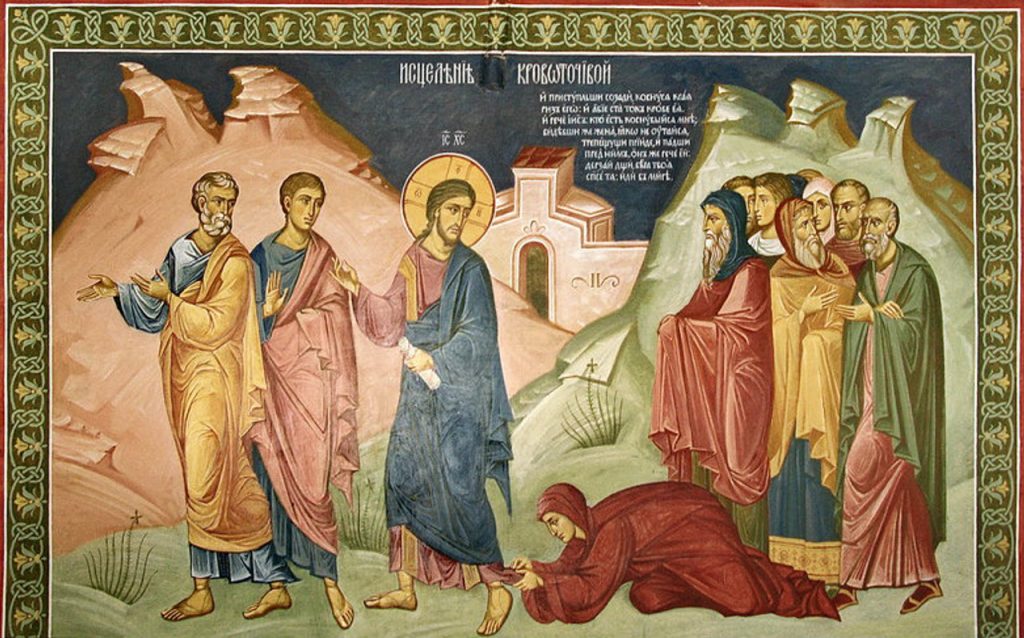
At that time, there came to Jesus a man named Jairus, who was a ruler of the synagogue; and falling at Jesus’ feet he besought him to come to his house, for he had an only daughter, about twelve years of age, and she was dying. As he went, the people pressed round him. And a woman who had had a flow of blood for twelve years and had spent all her living upon physicians and could not be healed by anyone, came up behind him, and touched the fringe of his garment; and immediately her flow of blood ceased. And Jesus said, “Who was it that touched me?” When all denied it, Peter and those who were with him said, “Master, the multitudes surround you and press upon you!” But Jesus said, “Some one touched me; for I perceive that power has gone forth from me.” And when the woman saw that she was not hidden, she came trembling, and falling down before him declared in the presence of all the people why she had touched him, and how she had been immediately healed. And he said to her, “Daughter, your faith has made you well; go in peace.” While he was still speaking, a man from the ruler’s house came and said, “Your daughter is dead; do not trouble the Teacher any more.” But Jesus on hearing this answered him, “Do not fear; only believe, and she shall be well.” And when he came to the house, he permitted no one to enter with him, except Peter and John and James, and the father and mother of the child. And all were weeping and bewailing her; but he said, “Do not weep; for she is not dead but sleeping.” And they laughed at him, knowing that she was dead. But taking her by the hand he called, saying, “Child, arise.” And her spirit returned, and she got up at once; and he directed that something should be given her to eat. And her parents were amazed; but he charged them to tell no one what had happened.
Homily: Garment of Salvation
In the name of the Father, and of the Son, and of the Holy Spirit. Amen.
Last Sunday, 9th November, we heard the Gospel about the double miracle: the healing of the woman with the flow of blood and the resurrection of Jairus’s daughter. Both miracles placed our Lord in apparent contradiction with the Jewish Law, which forbade contact with a woman during her flow of blood or with a dead body. Such contact made a person ritually unclean until they were purified through washing and sacrifice (Leviticus 15:19; Numbers 19:11). Those who were unclean were kept apart from worship and, in many ways, from society itself.
The bold actions of our Lord reveal that the Law is not above God, nor above His mercy. Christ cannot be defiled. The Source of purity meets impurity and destroys it. These are not accidental acts. They proclaim that Christ is truly the Living God, who became man and dwelt among us to purify us, and give us resurrection and life eternal.
Everyone who touches Him in faith is made holy. Holiness does not spread automatically but through faith and love. The same act of touching Christ can sanctify one person and condemn another. Judas took the Body of Christ from the Lord’s own hand, but because he rejected Him in his heart, the devil entered into him (John 13:27).
Even the objects surrounding our Lord are sanctified by His presence. The woman was healed by touching only the hem of His garment. In this, we glimpse the mystery of how matter itself is sanctified, how physical things can convey the Grace of God when united to the holy.
This is why the fabrics, vestments, and coverings used in the Church have deep meaning. They are not merely decorative. They express the sanctification of creation itself. In many Greek and Antiochian parishes, especially in the homelands, the faithful reach out to touch the priest’s vestments as he processes around the temple with the holy gifts — the bread and wine that are to be offered to God and become Body and Blood of Christ in the Sacrament of the Eucharist — during the Great Entrance, when the offering is carried from the Table of Preparation (Proskomedia) to the Holy Table (Altar). On one level, this gesture expresses the participation of the whole community in the offering. On another, it is an act of faith, entrusting one’s sorrows and hopes to God as the priest, representing Christ the High Priest, carries them to the altar. As the Apostle writes, “Since then we have a great High Priest who has passed through the heavens, Jesus the Son of God, let us hold fast our confession” (Hebrews 4:14).
My brother in Christ, Deacon Ephraim from the Cathedral parish, has a refined love for beautiful liturgical vestments, such as altar covers, icon veils, and clerical garments. At first, I thought this was vanity. But he once told me about the Abbot of Machairas Monastery in Cyprus, His Grace Bishop Epiphanios Machairiotis. Fr Ephraim has spent some time living at that monastery in preparation for his deacon ministry. He showed me two photographs: one of the bishop as a humble monk in simple black monastic garments, and another of him vested in magnificent, hand-made, episcopal robes celebrating the Divine Liturgy.
Deacon Ephraim said, “We do not wear these to show off. We wear them for the glory of God, to lift up our hearts and the hearts of those who worship, to reflect the harmony of the Kingdom of Heaven which we enter during the Divine Liturgy.” The Church strives to sanctify not only the soul and the body of each believer but also the material world around us, offering all things to God. Vestments and sacred garments are part of this mystery, mediators that unite us to the Prototype, the perfect God who walked the earth and purified His people even through the touch of His garment.
The Prophet Isaiah declares, “He has clothed me with the garments of salvation, He has covered me with the robe of righteousness” (Isaiah 61:10). Every Christian receives this garment in baptism and renews it through repentance and the Eucharist. To touch Christ in faith is to be clothed in His holiness.
May we all become holy by uniting ourselves to Christ, so that even what we wear and touch may convey His grace. Remember Apostle Peter, whose shadow healed the sick (Acts 5:15). May the Lord clothe us with the garment of salvation, cover us with His light, and make our lives a living witness to His glory. Amen.
Yours in Christ,
Fr Dmitry
